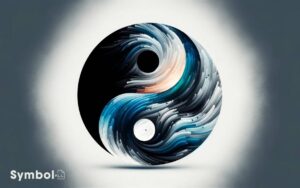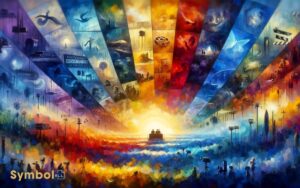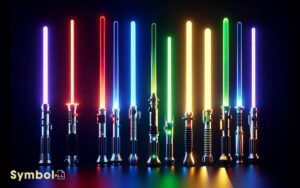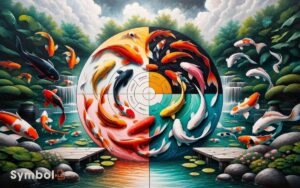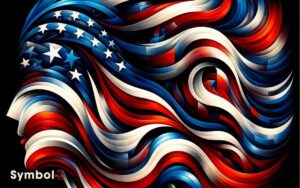What Does Color Yellow Symbolize? Joy, Wisdom!
You perceive yellow as a beacon of cheer and vibrancy, deeply influencing your mood and behavior. It embodies a duality that stimulates mental processes and encourages communication, evoking optimism as much as caution.
In nature, yellow mirrors life’s energy and renewal, while in culture, it symbolizes joy, wisdom, and prosperity, finding its way into Buddhist robes and national flags as a symbol of humility and freedom.
The color’s importance doesn’t end there; it also embodies caution, sickness, and jealousy, showcasing the complex duality in color perception.
Uncover how this multifaceted symbol plays a vital role across different contexts, inviting deeper exploration into its global meanings and influence.
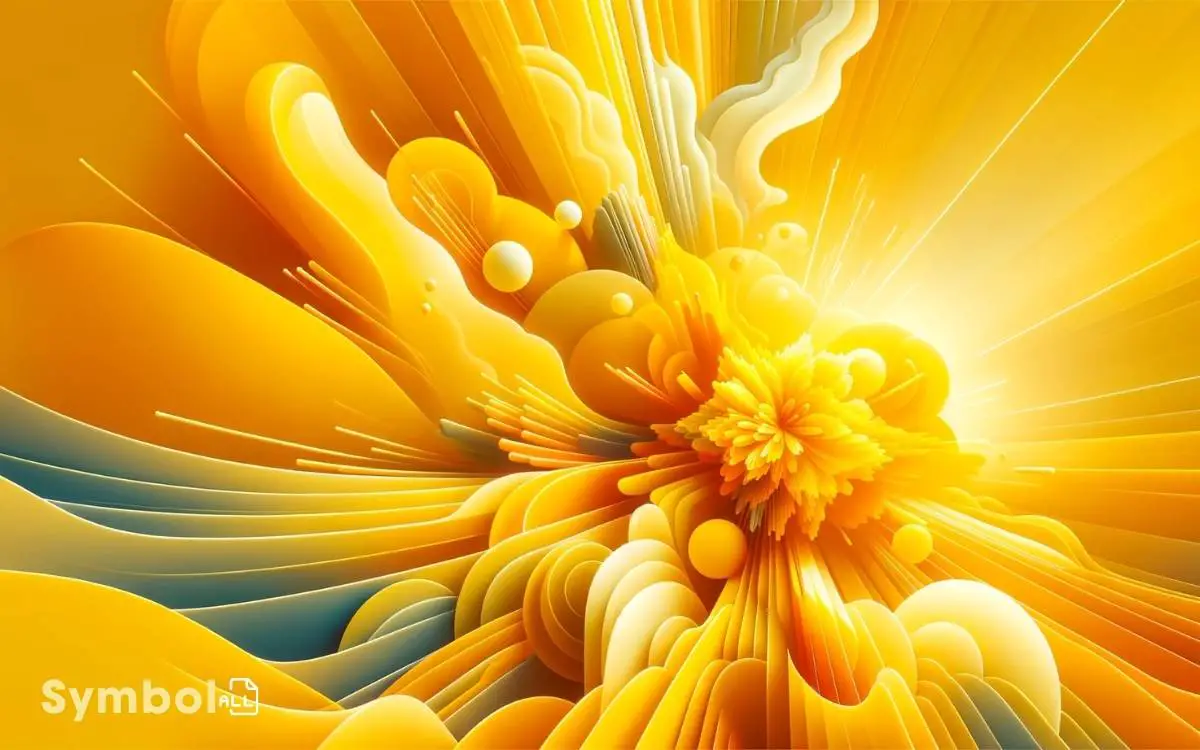
Key Takeaway
The Psychology of Yellow
Although often perceived as a cheerful and vibrant color, yellow’s psychological impact can deeply influence your mood and behavior, suggesting complexity beyond its sunny facade.
This hue isn’t just a simple expression of happiness; it’s a multifaceted symbol that can stir a range of emotions, from optimism and creativity to anxiety and caution.
You mightn’t realize it, but when you’re surrounded by yellow, your mental and emotional state shifts, often subconsciously.
It’s a color that demands attention, stimulating your mental processes and encouraging communication.
However, its brightness can also be overwhelming, leading to discomfort or irritation in some.
As you navigate through environments painted in this hue, you’re engaging in a silent conversation with yellow, one that can uplift or unsettle, showcasing its profound psychological resonance.
Yellow in Nature and Culture
Exploring the presence of yellow in nature and culture reveals its profound symbolic significance, echoing the complexity of emotions it evokes in the psychological sphere.
In nature, yellow’s prevalence, from the radiant sun to the delicate petals of a daffodil, mirrors life’s essential energy and renewal.
Culturally, this color weaves through countless traditions and histories, often embodying joy, wisdom, and prosperity.
Societies across the globe have harnessed yellow’s visibility and vibrance, from the robes of Buddhist monks symbolizing humility and separation from materialism to the golden hues adorning many national flags, signifying solidarity and freedom.
This color’s inherent brightness and warmth thereby become a universal language, speaking to shared human experiences and the continual intertwining of nature and culture.
Yellow: A Double-Edged Sword
While yellow often radiates positivity and warmth, it also harbors a more complex, sometimes negative symbolism that can’t be overlooked.
This duality is both fascinating and instructive, revealing the multifaceted nature of color perception.
| Positive Symbolism | Negative Symbolism |
|---|---|
| Happiness | Caution |
| Optimism | Cowardice |
| Creativity | Sickness |
| Enlightenment | Jealousy |
Analyzing yellow’s symbolism reveals a deep, inherent dichotomy. It embodies the best and sometimes the worst of what colors can represent. This dual nature reminds you that context dramatically influences color perception.
Hence, yellow’s impact is never static; it shifts with societal norms and personal experiences, challenging you to ponder its broader implications within cultural, psychological, and emotional landscapes.
Yellow in Art and Design
In the domain of art and design, you’ll find that yellow holds a potent psychological sway, influencing perceptions and emotions in ways both subtle and profound.
Its application in logos leverages this impact, turning brands into beacons of energy and optimism.
Yellows Psychological Impact
How does yellow, often associated with warmth and creativity, influence our psychological state when encountered in art and design? This vibrant hue can stimulate our emotions, promoting a sense of optimism and energy.
Yet, it’s not just about feeling happier; yellow’s impact is nuanced, affecting various aspects of our psychological well-being.
| Impact | Description |
|---|---|
| Stimulates Optimism | Evokes a sunny disposition, enhancing positivity. |
| Boosts Creativity | Encourages innovative thinking and openness. |
| Signals Caution | In specific contexts, it can prompt careful attention. |
This table illustrates yellow’s multifaceted effects. When you engage with yellow in art and design, you’re not just seeing a color.
You’re experiencing a catalyst for emotional and cognitive responses, tailored by the shade’s intensity and the context in which it’s used.
Yellows Use in Logos
Understanding the psychological impacts of yellow sets the stage for exploring its strategic use in logos.
Yellow captures attention and communicates brand values effectively. When you see a logo emblazoned in yellow, it’s not just by chance.
This deliberate choice taps into yellow’s association with optimism, energy, and innovation.
Brands leverage these connotations to forge a connection with their audience, signaling a promise of positive experiences.
Consider how tech companies use yellow to suggest innovation, or food chains to evoke warmth and appetite. This color’s high visibility also guarantees logos stand out in a crowded marketplace.
Analyzing yellow’s application in logos reveals a nuanced strategy to influence perception and behavior, showcasing the color’s potent symbolic and psychological power in brand identity.
Yellows Global Meanings
Across cultures, yellow holds a tapestry of meanings that both unite and distinguish global perspectives.
This vibrant hue can symbolize everything from warmth and happiness to caution and illness, depending on where you’re in the world. It’s fascinating to observe how yellow’s interpretation can shift so dramatically across different societies.
- In many Western cultures, yellow is often associated with joy, optimism, and energy.
- In Egypt, yellow is the color of mourning.
- In Japan, yellow stands for courage and nobility.
- Ancient Aztec societies revered yellow as the color of food and corn, the staples of life.
These diverse interpretations highlight yellow’s dual nature as both a harbinger of positivity and a warning.
This duality offers a rich field for scholarly examination, inviting you to explore how cultural contexts shape our perceptions of color.
Yellow in Modern Media
In modern media, you find that yellow’s emotional impact is profound, influencing audiences with its bright, energizing presence.
Iconic yellow characters, from animated figures to superheroes, harness this color to stand out and embody specific traits, resonating deeply with viewers.
Meanwhile, yellow in advertising strategically captures attention and evokes feelings of optimism and creativity, demonstrating its powerful symbolic versatility.
Yellows Emotional Impact
Yellow’s presence in modern media, through its evocative power, often shapes viewers’ emotional responses, subtly influencing perceptions and moods.
This color’s impact isn’t arbitrary; it’s deeply rooted in psychological effects that yellow has on the human mind.
When you encounter yellow in films, advertisements, or digital platforms, it’s typically utilized to:
- Evoke feelings of happiness and optimism
- Stimulate mental activity and encourage communication
- Capture attention and signal caution or warning
- Create a sense of warmth and comfort
These effects aren’t merely coincidental. Directors, designers, and marketers carefully select hues to evoke specific responses.
Yellow’s bright and vibrant nature can uplift spirits, but its overuse or inappropriate application can lead to feelings of anxiety or distress.
Understanding yellow’s emotional impact allows for a deeper appreciation of its strategic use in modern media.
Iconic Yellow Characters
Delving into the world of modern media, you’ll discover that several iconic characters donned in yellow have transcended mere visual appeal, embodying complex emotions and cultural significance.
Take, for instance, the enigmatic and cheerful SpongeBob SquarePants, whose yellow exterior mirrors his sunny disposition, symbolizing optimism and joy.
Similarly, the Simpsons, with their distinct yellow skin, have become a cultural phenomenon, representing a satirical depiction of the American family.
These characters, cloaked in yellow, aren’t random choices but deliberate decisions by creators to evoke specific feelings and reactions.
Yellow, within this framework, serves as a medium to explore themes of happiness, energy, and caution, making these characters memorable and impactful.
Through this perspective, yellow becomes a powerful tool in storytelling, enriching narratives and deepening audience engagement.
Yellow in Advertising
Many brands strategically deploy the color yellow in their advertising campaigns to capture attention and evoke a sense of happiness and energy.
This choice isn’t arbitrary but deeply rooted in the psychology of color and its impact on consumer behavior.
Yellow, with its inherent brightness, stands as a beacon of optimism and warmth, traits that brands often wish to associate with their products or services.
Consider the following points:
- Yellow grabs attention faster than any other color.
- It stimulates mental processes and encourages communication.
- This color is often associated with clarity and intellect.
- Yellow can foster a sense of warmth and comfort, making products seem more inviting.
Conclusion
In the kaleidoscope of human perception, yellow emerges as a beacon of optimism and caution, illuminating your path with its dual essence.
This color’s psychological and cultural tapestry, woven with threads of joy and warning, enriches your understanding of its complex character.
Whether in art, nature, or media, yellow holds a mirror to society’s values and fears, urging you to navigate the spectrum of its meanings with both appreciation and mindfulness.
Embrace yellow’s radiant energy, but heed its cautionary tales.

